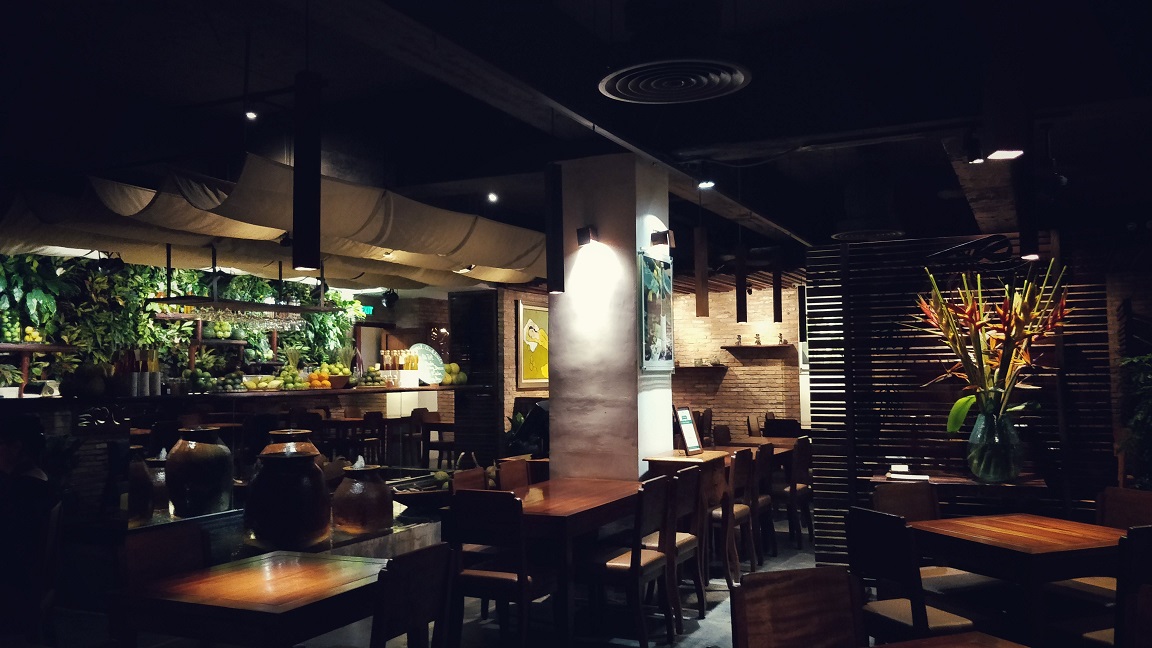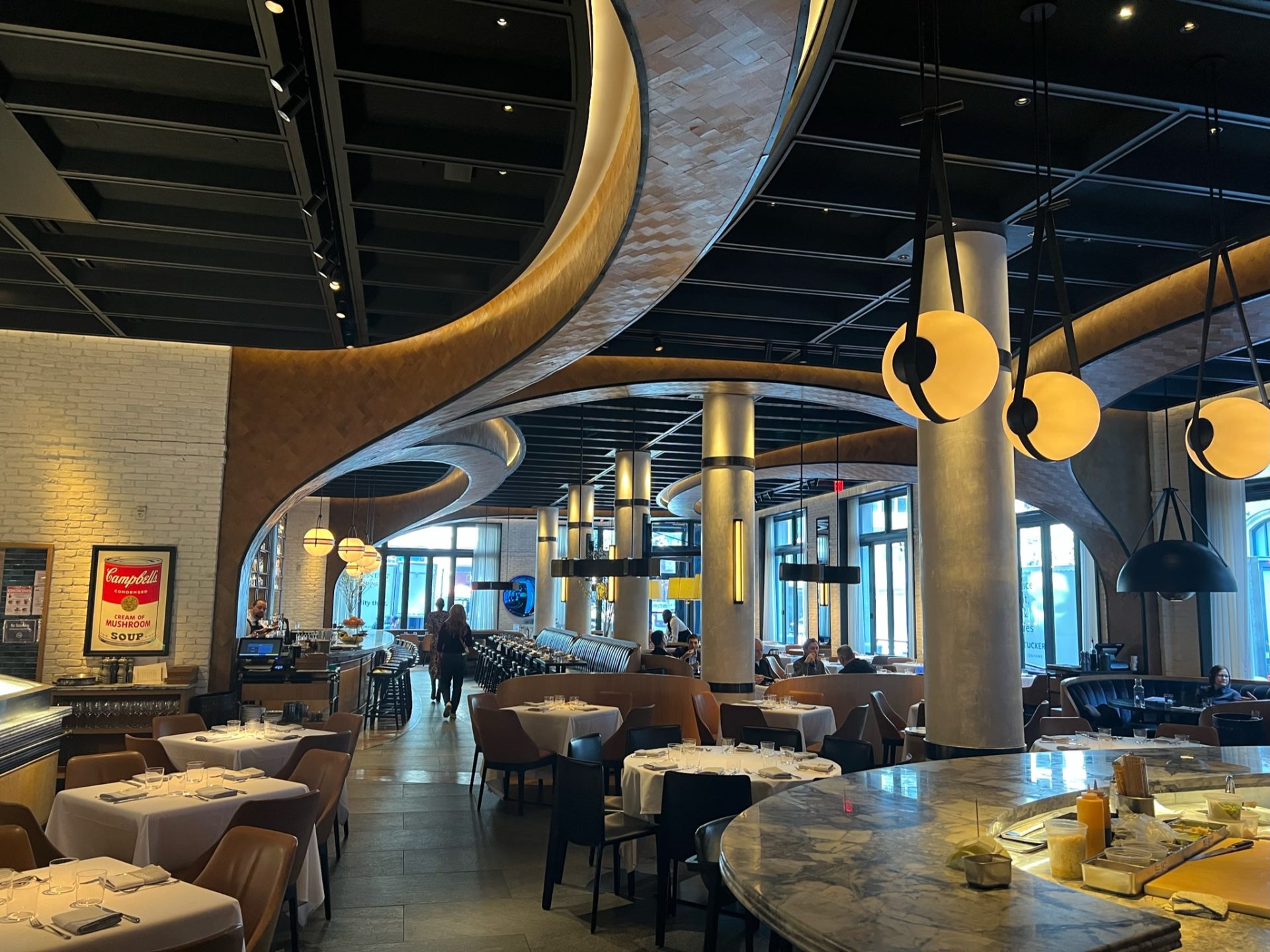Pan Asian Restaurant Islamabad: Discover Exquisite Asian Food
Wiki Article
Savor Authentic Oriental Food With a Pan-Asian Twist for a Cooking Experience
Beginning on a cooking journey with authentic Oriental cuisine, enhanced with a Pan-Asian spin, offers a special possibility to check out the rich tapestry of flavors that specify the region's varied cooking customs. As you consider these luring dishes, think about the cultural stories and historic impacts that form them, each bite offering a story waiting to be found. pan asian restaurant Islamabad.
Discovering Pan-Asian Flavors
In the world of worldwide gastronomy, Pan-Asian food stands out for its amazing diversity and the unified interplay of flavors from various Eastern societies. This culinary technique commemorates the special ingredients and rich practices found across the continent, producing a tapestry of preferences that is both gratifying and fascinating. Key to Pan-Asian cuisine is its capacity to balance contrasting tastes-- sweet, salted, spicy, and sour-- while highlighting the freshness and high quality of each active ingredient.From the umami-rich soy sauce of Japan to the intense chili peppers of Thailand, Pan-Asian cuisine offers an extensive palette of tastes. These aspects are usually integrated in innovative methods, enhancing recipes with layers of intricacy. For example, the use of great smelling herbs such as lemongrass and cilantro, typical in Vietnamese and Thai cuisine, includes a refreshing illumination to recipes, while the incorporation of coconut milk provides a luscious, abundant appearance.
The focus on fresh fruit and vegetables and aromatic seasonings makes sure that each meal is not just a feast for the palate however also for the senses. Pan-Asian cuisine invites restaurants to start a culinary trip, discovering the huge and varied landscapes of Eastern gastronomy with every bite.
Combination Dishes to Try
While Pan-Asian cuisine is celebrated for its traditional tastes, the contemporary culinary landscape is progressively accepting blend recipes that blend these classic elements with impacts from various other areas. This innovative strategy not only honors the abundant heritage of Eastern culinary arts yet likewise introduces novel taste experiences that appeal to modern tastes.
A prime example of such a combination dish is the Korean-Mexican taco, where seasoned bulgogi beef is wrapped in a cozy tortilla, topped with kimchi and a spicy gochujang-infused salsa. This combination weds the bold, savory flavors of Korea with the vivid, fresh elements of Mexican cuisine. Similarly, sushi burritos have gained popularity, amalgamating the fragile virtuosity of Japanese sushi with the passionate, hand-held convenience of a burrito, usually featuring fusion active ingredients like tempura shrimp and avocado with a drizzle of wasabi mayo.
One more noteworthy meal is Thai curry ramen, which instills the luscious, fragrant seasonings of Thai curry right into the soothing broth of traditional Japanese ramen, creating a harmonious mix that entices the detects. These combination recipes extend past plain novelty; they represent a culinary discussion between cultures, encouraging exploration and development in the globe of Pan-Asian food.
Important Active Ingredients and Seasonings
To really appreciate Pan-Asian food, one have to understand the necessary components and seasonings that form its foundation. This varied cooking design draws from an abundant tapestry of Asian customs, employing a harmonious mix of structures and tastes. Trick active ingredients include soy sauce, fish sauce, and oyster sauce, which give a full-flavored umami depth vital to Asian dishes. Complementary to these are rice vinegar and mirin, providing a delicate acidity and sweetness.Fragrant components are crucial, with garlic, lemongrass, and ginger being common across various Pan-Asian recipes. These ingredients give an aromatic base that boosts the intricacy of tastes. Spices such as star anise, cardamom, and cinnamon present warmth and personality, resembling influences from areas like China and India.

Food Preparation Methods and Tips
Understanding the art of Best ambiance restaurants Islamabad Pan-Asian food calls for familiarity with its distinct food preparation techniques, each contributing to the dynamic tapestry of flavors this cooking practice is celebrated for. Central to these techniques is the stir-fry, a fast cooking technique that maintains the nutritional honesty and vibrant shades of ingredients. Utilizing a wok, the stir-fry technique permits for even warm distribution, necessary for attaining the characteristic structure and flavor equilibrium of Pan-Asian meals.Another essential technique is steaming, specifically prevalent in Chinese cuisine. This mild approach keeps the natural flavors and nutrients of components, making it perfect for seafood and veggies. Dumplings, a beloved staple, commonly benefit from steaming, leading to soft, delicious structures.
Grilling, likewise indispensable, passes on smoky depths to meals such as Oriental bulgogi or Japanese yakitori (pan asian restaurant Islamabad). This method often entails marinating active ingredients, allowing flavors to penetrate deeply before cooking over an open fire or hot plate
Finally, grasping the art of stabilizing flavors-- pleasant, sour, salted, bitter, and umami-- is critical. Properly layering these components can raise a dish from ordinary to amazing, using a complicated and pleasing cooking experience that symbolizes the significance of Pan-Asian food.
Dining Experiences Worldwide
Around the world, Pan-Asian food provides an unparalleled eating experience, celebrated for its rich tapestry of tastes and dynamic presentations. This culinary phenomenon has actually gone beyond cultural borders, recording the hearts and palates of food fanatics worldwide. In worldwide cities fresh York, London, and Sydney, Pan-Asian dining establishments function as fusions where culinary practices from Thailand, Japan, China, and past converge, supplying diners with a diverse mix of meals that highlight the region's diversity.The international appeal of Pan-Asian cuisine depends on its capacity to use both credibility and innovation. Cooks masterfully marry conventional ingredients such as lemongrass, soy sauce, and miso with contemporary techniques, resulting in recipes that are both acquainted and refreshingly brand-new. This fusion allows diners to embark on a cooking trip that appreciates heritage while accepting modernity.
Additionally, eating experiences are elevated with attentively developed environments that show the values of Pan-Asian aesthetics. From minimalist Japanese-inspired interiors to lively Thai-themed areas, each restaurant uses an one-of-a-kind atmosphere that enhances the culinary offerings. Because of this, patrons are not merely consuming a meal yet partaking in a social experience, making Pan-Asian dining an absolutely worldwide phenomenon.
Final Thought
The exploration of Pan-Asian cuisine provides an extensive understanding of the detailed interaction of tastes and culinary practices throughout Asia. By accepting blend dishes such as Thai curry ramen and sushi burritos, the culinary journey not only highlights the flexibility of typical ingredients but additionally showcases cutting-edge contemporary techniques. This gastronomic journey, enhanced by necessary seasonings and cooking methods, supplies a distinct opportunity to appreciate the cultural diversity and culinary virtuosity that define Pan-Asian food on an international scale.Getting started on a culinary trip with genuine Eastern food, improved with a Pan-Asian twist, provides a distinct chance to explore the rich tapestry of flavors that define the area's diverse cooking traditions.In the realm of worldwide gastronomy, Pan-Asian food stands out for its exceptional variety and the harmonious interplay of tastes from different Oriental cultures. Trick to Pan-Asian cuisine is its capacity to balance contrasting flavors-- pleasant, salted, spicy, and sour-- while highlighting the quality and quality of each ingredient.

Report this wiki page